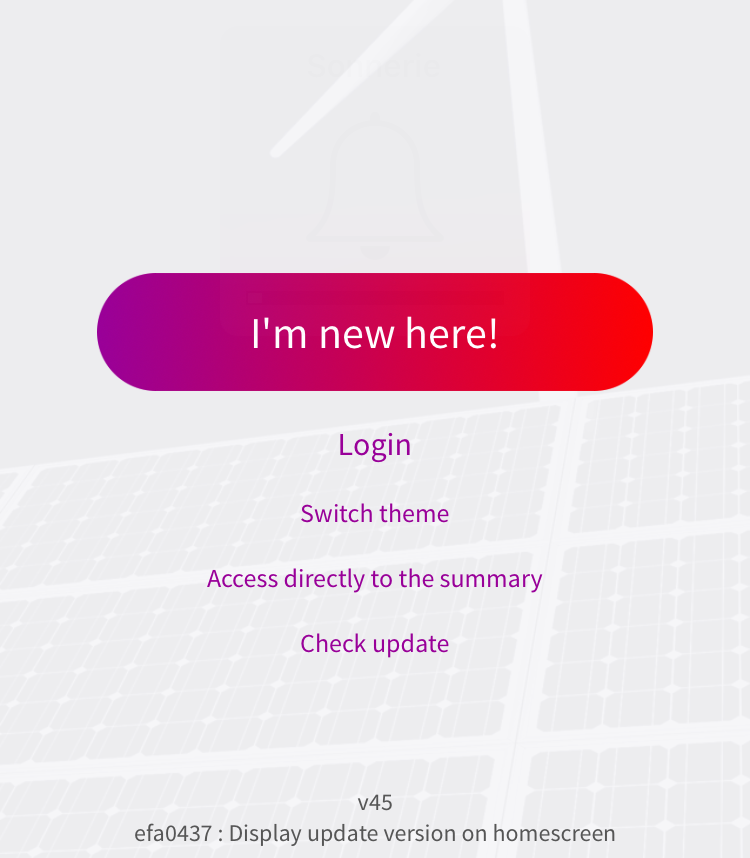[MO] Install CodePush on your project (~1h)
Owner: Louis Lagrange
Prerequisites (~2min)
- [ ] A running React Native app, preferably started with the generator
- [ ] A compatible React Native version (see compatibility table)
What is CodePush?
A React Native app is composed of JavaScript files and any accompanying images, which are bundled together by the packager and distributed as part of a platform-specific binary (i.e. an .ipa or .apk file). Once the app is released, updating either the JavaScript code (e.g. making bug fixes, adding new features) or image assets, requires you to recompile and redistribute the entire binary, which of course, includes any review time associated with the store(s) you are publishing to.
CodePush allows to rebuild and push only the modified JS code.
Pros:
- Faster builds
- Easier to update: no need to download the whole app again on HockeyApp
- See deployment history and statistics
- Easy rollbacks
- If you enable it in production, you can install updates silently and automatically
Cons:
- You rely on Microsoft Azure's servers
Here's an example on redacted app, where we enabled it on staging in order to speed up development (at the bottom of the screen).

Steps
1. Install code-push cli (~1 min)
npm install -g code-push-cli
Check: code-push -v should give you a version.
2. Login into code-push (~4 min)
Login into GitHub with bam developers account. In your terminal:
code-push register
and finish the login process using GitHub.
Check: code-push whoami should give you your GitHub email.
3. Install the react-native module (~5 min)
Lookup the compatible version (we'll name it <your.version>) in the compatibility table.
# Add the npm dependency
yarn add react-native-code-push@<your.version>
# Register your Android app
code-push app add <MyApp>-android android react-native
# Save the Staging token for later use
# Register your iOS app
code-push app add <MyApp>-ios ios react-native
# Save the Staging token for later use
# Link the native modules. Paste your Staging tokens when prompted.
react-native link react-native-code-push
Check: your app should build with the binary CodePush modules. The deploy keys are present in Info.plist and in MainApplication.java.
4. Update your code (~35 min)
Update App.js (~10 min)
// @flow
import React, { Component } from 'react';
...
import codePush from 'react-native-code-push';
import { ENV } from 'MyApp/environment'
const codePushOptions = {
updateDialog: true,
installMode: codePush.InstallMode.IMMEDIATE,
checkFrequency: codePush.CheckFrequency.MANUAL,
};
class App extends Component {
render() {
...
return <Scenes />;
}
}
const AppComponent = ENV === 'STAGING' ? codePush(codePushOptions)(App) : App;
export default AppComponent;
Check: No check on simulator. Your app should not crash (duh!).
Update Home.js (~15 min)
You can put the update process on any page you like, or even check if an update is available with a long press somewhere... It is up to you and your PO.
import React, { Component } from 'react'
import codePush from 'react-native-code-push';
import { ENV } from 'MyApp/environment'
...
class Home extends Component {
constructor (props) {
super(props)
this.state = {
updateDescription: null,
updateLabel: null,
codePushStatus: null
}
}
componentDidMount() {
if (codePush && ENV === 'STAGING') {
// Will fetch the latest update metadata
codePush.getUpdateMetadata().then(update => {
if (!update) return;
this.setState({
updateDescription: update.description,
updateLabel: update.label,
});
});
}
}
render () {
return (
<View>
...
{ENV === 'STAGING' &&
<View>
<Button
buttonText={this.state.codePushStatus || 'Check update'}
onPress={() => {
codePush.sync(
{
updateDialog: {
appendReleaseDescription: true,
descriptionPrefix: '\n\nModifications:\n',
},
},
SyncStatus => {
switch (SyncStatus) {
case codePush.SyncStatus.CHECKING_FOR_UPDATE:
this.setState({ codePushStatus: 'Checking for update' });
break;
case codePush.SyncStatus.AWAITING_USER_ACTION:
this.setState({ codePushStatus: 'Await action' });
break;
case codePush.SyncStatus.DOWNLOADING_PACKAGE:
this.setState({ codePushStatus: 'Downloading' });
break;
case codePush.SyncStatus.INSTALLING_UPDATE:
this.setState({ codePushStatus: 'Installing' });
break;
default:
this.setState({ codePushStatus: 'No update found' });
}
}
);
}}
/>
</View>
}
...
{this.state.updateLabel &&
<View style={{ position: 'absolute', bottom: 5, backgroundColor: 'transparent' }}>
<Text style={{ fontSize: 12, textAlign: 'center' }}>
{this.state.updateLabel}
</Text>
<Text style={{ fontSize: 12, textAlign: 'center' }}>
{this.state.updateDescription}
</Text>
</View>}
</View>
)
}
}
export default Home
Check: On simulator, you should see an update button if you force the env to staging. You can force the labels in the state variables updateDescription and updateLabel to check their position.
Create bin/deploy.sh (~10 min)
Check: yarn deploy -- -t hard should deploy your application with Fastlane. yarn deploy should deploy with codepush.
5. Test! (~15 min)
Open your PR, merge into the main branch. Have a hard build. You can now deploy with code-push.
Bump your versions into .env.staging file before every hard deploy. If not, your JS code might try to call native libraries not present in your app.
6. Externalize the keys (optional) (~10min)
Externalize the keys in Info.plist and AndroidManifest.xml: see https://github.com/kraynel/code-push-demo/commit/3cdd2496fab763a9814c1898c73505cd14fca9d1
Troubleshooting
You can try the CodePush documentation, and particularly the react-native section.
You should also Andon the teams with a working CodePush process: